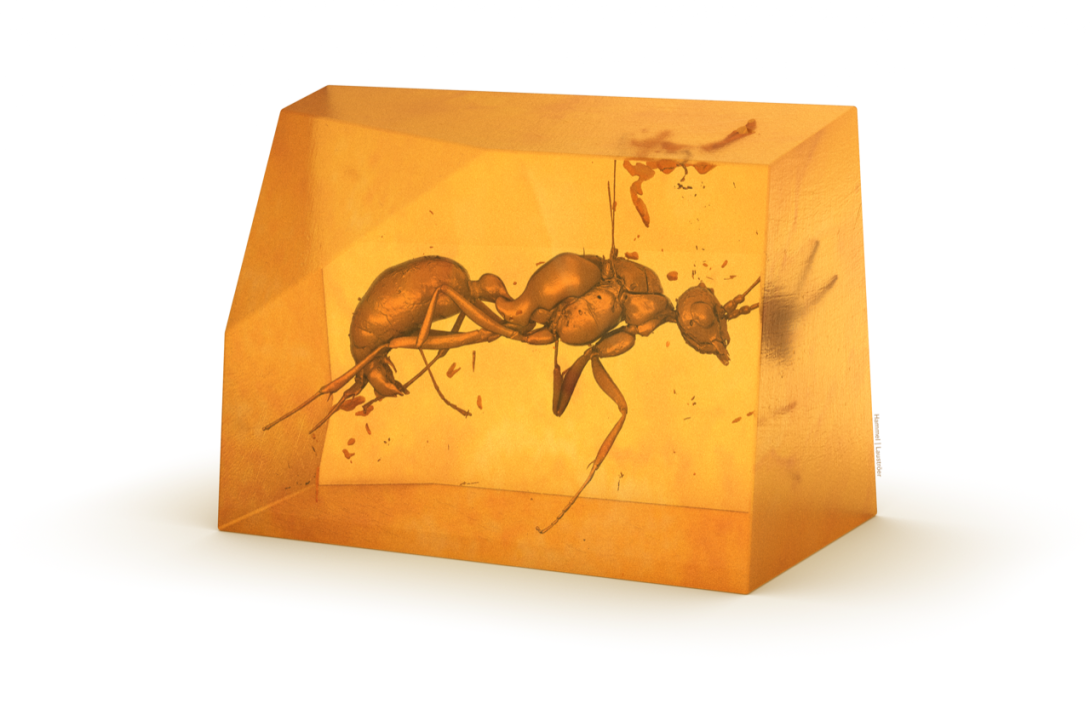Science clusters

Summary
Amber fossils provide a unique window into ancient ecosystems, offering insights into extinct organisms through remarkable preservation of both external and internal structures: fossilised specimens are preserved 3-dimensionally, they allow us to study surface structures of the animals such as hairs, scales or flower structures which are in the rarest case preserved in other forms of fossils, and they occasionally conserve internal soft tissues which allows the complete or partial reconstruction of the inner anatomy of the studied fossil organism. AMBCAT aims to centralise and make accessible high-resolution digital scans of these rare fossils, fostering collaboration among researchers and advancing scientific research on a global scale.
Challenge
Open Science project, Cross-domain/Cross-RI
The study of amber fossils is not excluded from difficulties. Conventional imaging tools often fail to capture critical details, especially when inclusions are obscured by other materials, or when the amber is non-transparent, presenting a milky appearance. Additionally, the scattered and redundant imaging efforts across various institutions can lead to wasted resources and missed opportunities for collaboration, hindering comprehensive scientific analysis.
Solution
AMBCAT aims at making the physical amber fossils data centrally stored and archived at DESY FAIR and open available to the general community and public. A data catalogue will be offered, aggregating and providing all relevant metadata for the digitalised objects together with the imaging protocols. In conjunction with the actual image data, AMBCAT is also expected to provide access to the actual image data, as well as online visualisation tools in a browser-based application. This platform will streamline research effort allowing researchers worldwide to access and use the data, preventing duplication, and enabling comprehensive analysis using advanced μCT scanning technologies, which have shown to be an effective and valuable tool to visualise and create 3D models of amber fossils.
Scientific Impact
By digitising and cataloguing over 1,500 amber fossils, AMBCAT promotes interdisciplinary research and public engagement, enabling the use of fossil data in fields ranging from climate, ecosystem and biodiversity change, to evolutionary and phylogenetic research. Since amber fossils have fascinated the public ever since, results from amber studies may be used to make concepts of paleoecosystem and climate research accessible to non-scientists. AMBCAT also serves as a bridge between scientific inquiry and public education, offering opportunities for exhibitions, educational resources, and media content that bring paleoscience to life.
AMBCAT will result in building and strengthening collaboration networks in Europe- and worldwide and lead to synergies, avoiding that a same sample is loaned or scanned/analysed several times by different research groups, and contributing to a usage of scan data for different purposes.
Principal investigator

- Senior Beamline scientist at Helmholtz-Zentrum Hereon, Institute of Materials Physics, X-ray Imaging with Synchrotron Radiation.
- Research fellow at the Friedrich-Schiller-Universität Jena, Institut für Spezielle Zoologie und Evolutionsbiologie mit Phyletischem Museum
- Research fellow at the Section Computational Science, University of Amsterdam.
- Doctorate at Friedrich-Schiller-Universität Jena, Institut für Spezielle Zoologie und Evolutionsbiologie mit Phyletischem Museum
- Diploma “Diplom-Biologe (technisch orientiert)” at Universität Stuttgart

